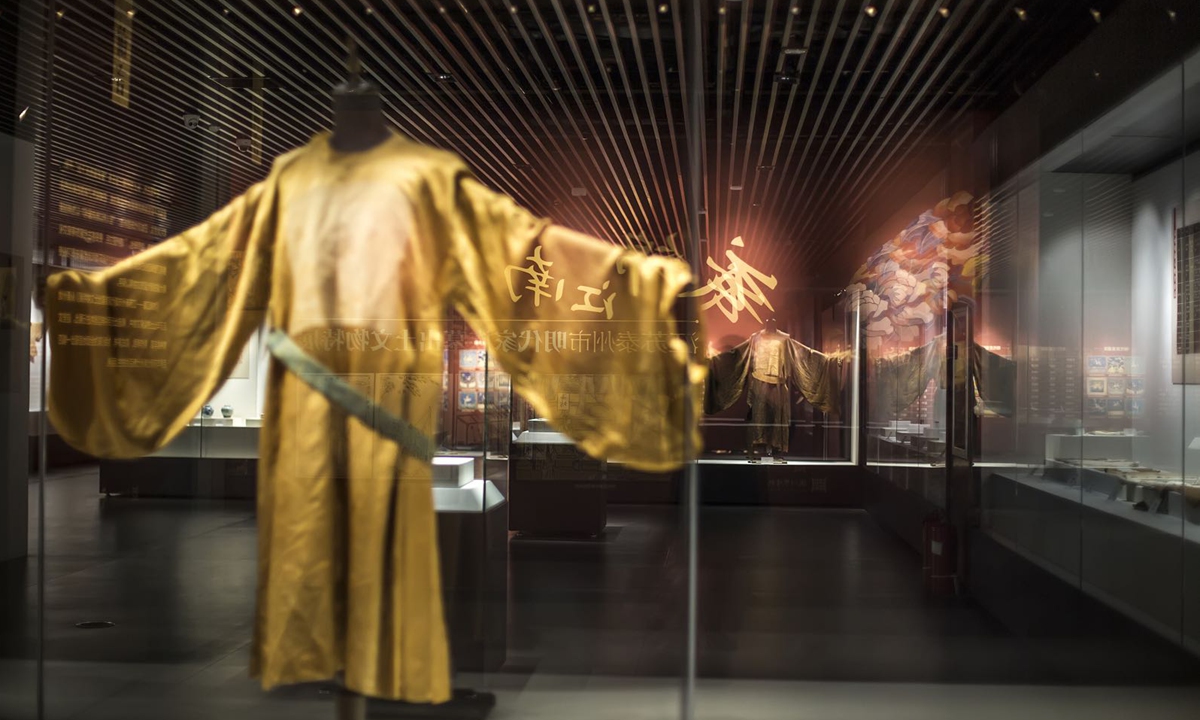Chinese museum launches digital protection for nearly 50 Ming Dynasty costume items
By Ji Yuqiao Source: Global Times Published: 2020/7/16 23:16:35

The exhibition of costumes in Ming Dynasty Photo: VCG
Shan Dong Museum in East China's Shandong Province launched digital protection for nearly 50 items of ancient costumes of the Ming Dynasty (1368-1644), filling the gap of digital collection of cultural relics.
The museum's staff will collect textures of costumes from hundreds of years ago and complete the work of modeling these costumes, according to a report by China News Service on Wednesday.
"Digital protection refers to collecting data of cultural relics through some professional machines," Gong Decai, a professor at the University of Science and Technology of China and an expert on cultural relic conservation, told the Global Times on Thursday.
Gong said that the work is to permanently preserve the information about cultural relics and share the information to researchers conveniently.
Digital collection of different types of cultural relics, such as clothing, porcelain and wood carvings, is mainly carried out through photographing and scanning, Song Weichang, a member of the digital protection project, told the China News Service.
Song used a spatial digitizer to scan a piece of pottery and record its size. He said that as some high technologies, including 3D Printing and artificial intelligence, have developed, they have been widely used in the process of cultural relic protection, which is helpful for preventive protection and restoration of cultural relics.
"Through information collection and later technology synthesis, we will try our best to restore the original colors and styles of clothing cultural relics," he added.
One of employees of the Shan Dong Museum told the Global Times on Thursday that their information department is in charge of digital collection work.
Gong said that the scanning and collection work needs a unified standard, and the curator of the museum, Zheng Tongxiu hopes that the experience of collecting information about ancient costumes can be promoted to the whole country and an industry standard can be established at the same time.
Due to special factors such as the old age of clothing relics and fragile materials, cultural relic safety must be given top priority in the process of digital collection, and the influence of lighting equipment on cultural relics must be taken into consideration, Zheng added.
The digital collection technology has been promoted to other museums such as the Palace Museum.
A platform named "digital Forbidden City" has been launched to display the museum's collections online and let more people appreciate these art masterpieces.
Cultural relics including paintings and royal collections on the platform have all been scanned and their data has been uploaded online.
Posted in: CULTURE & LEISURE